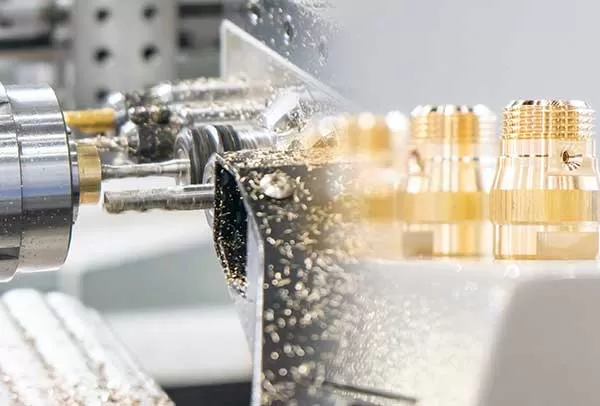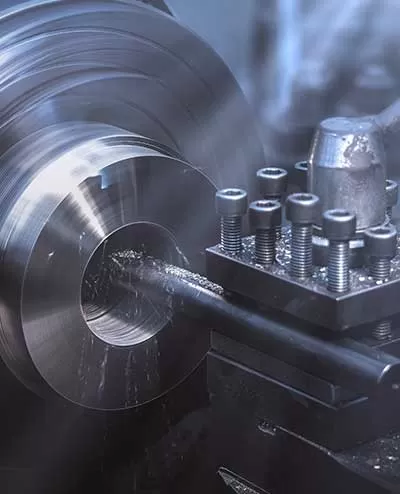CNC turning is a popular method of machining that involves rotating a workpiece while a cutting tool removes material to create a precise shape. Cycle time refers to the total time it takes to complete a single cycle of a CNC turning process, from loading and unloading the workpiece to finishing.
Calculating cycle time is essential for improving efficiencies, reducing costs, and increasing productivity in CNC turning processes. However, it can be a complex task that requires a detailed understanding of the machining process, machine setup, and tooling.
In this article, we’ll provide a comprehensive guide on how to calculate cycle time for CNC turning. We’ll cover everything from the basic formula for calculating cycle time to more advanced techniques for optimizing machining processes.
Understanding Cycle Time
Before we dive into the calculation process, let’s first define what cycle time is. Cycle time is the time it takes to complete a specific operation or process, from start to finish. In CNC turning, cycle time includes cutting, tool changes, and any other necessary tasks involved in the process.

Basic Formula for Calculating Cycle Time
The basic formula for calculating cycle time is:
Cycle Time = Time to Complete One Part + Time to Load/Unload Workpiece
To calculate the time to complete one part, you need to know the cutting time and the non-cutting time. The cutting time is the time it takes for the cutting tool to remove material from the workpiece, while the non-cutting time includes any time spent moving the tool to a new position, changing the tool, or performing other non-cutting activities.
To calculate the cutting time, use the following formula:
Cutting Time = Length of Cut ÷ Feed Rate
The length of cut is the distance the cutting tool travels along the workpiece, while the feed rate is the speed at which the cutting tool moves along the workpiece. For example, if the length of cut is 10 inches and the feed rate is 5 inches per minute, the cutting time would be 2 minutes.
To calculate non-cutting time, you need to factor in any tool changes, workpiece setup, and machine movement. For example, if it takes 1 minute to change the cutting tool and 30 seconds to load and unload the workpiece, the non-cutting time would be 1 minute and 30 seconds.
Calculating Cycle Time
Now, let’s get into the nitty-gritty of calculating cycle time. The general formula for cycle time is as follows:
Cycle Time = (Time for Cutting + Time for Tool Change + Other Necessary Time) x Number of CNC Parts
Here’s how you can break down each of these components:
Time for Cutting:
The time for cutting depends on several factors, such as the type of material, the speed of the spindle, and the complexity of the part. To determine the time for cutting, use the following formula:
Time for Cutting = Length of Part x Number of Passes x Material Removal Rate
Length of Part refers to the distance that the tool has to travel during the cutting process, and Number of Passes refers to the number of times the tool has to go over the same area to achieve the desired result. Material Removal Rate refers to the amount of material that is removed per unit of time.
Time for Tool Change:
The time for tool change includes the time it takes to remove the old tool, insert the new one, and adjust the position. To determine the time for tool change, you can use the following formula:
Time for Tool Change = (Tool Change Time + Tool Adjustment Time) x Number of Tool Changes
Tool Change Time refers to the amount of time required to physically change the tool, while Tool Adjustment Time refers to the time required to adjust the tool’s position once it has been changed.

Other Necessary Time:
Other necessary time refers to any other necessary tasks involved in the process, such as cleaning the machine or setting up the workpiece. To determine other necessary time, you can use the following formula:
Other Necessary Time = Time per Part x Number of Parts
Time per part refers to the time it takes to complete all the necessary tasks for one part.
Putting It All Together:
Once you have determined the time for cutting, time for tool change, and other necessary time, you can plug those values into the general formula for cycle time:
Cycle Time = (Time for Cutting + Time for Tool Change + Other Necessary Time) x Number of Parts
Advanced Techniques for Optimizing CNC Turning Processes
Calculating cycle time is just the first step in optimizing the CNC turning process. There are several advanced techniques you can use to further improve efficiencies and reduce costs.
Reduce tool change time: One of the most significant contributors to non-cutting time is changing cutting tools. By reducing tool change time, you can minimize non-cutting time and increase productivity. There are several ways to achieve this, including using quick-change tooling systems, improving tool change procedures, and using tools with longer tool life.
Increase feed rate: Increasing feed rate can reduce the time it takes to complete a cut, thus reducing the cutting time and increasing productivity. However, increasing the feed rate too much can lead to tool wear and lower tool life, so it’s essential to find the optimal feed rate for each application.
Use high-speed machining techniques: High-speed machining techniques involve using higher cutting speeds and lighter cuts to increase material removal rates and reduce cycle time. However, high-speed machining requires specialized tooling and machine capabilities, so it’s essential to evaluate whether it’s a viable option for your CNC turning process.
Conclusion
Calculating cycle time is an essential part of the CNC turning process. By understanding the components of cycle time and using the tips and tricks we’ve provided, you can optimize your production process, reduce cycle time, and increase revenue.


